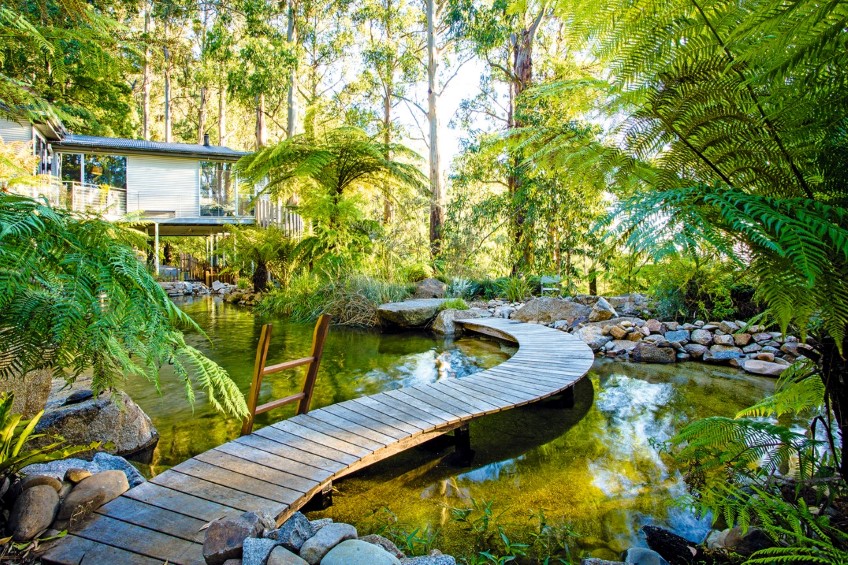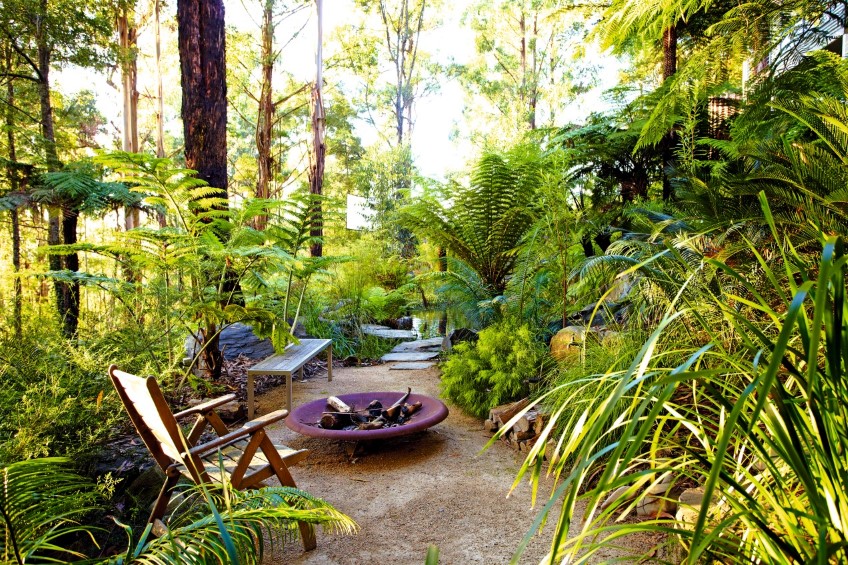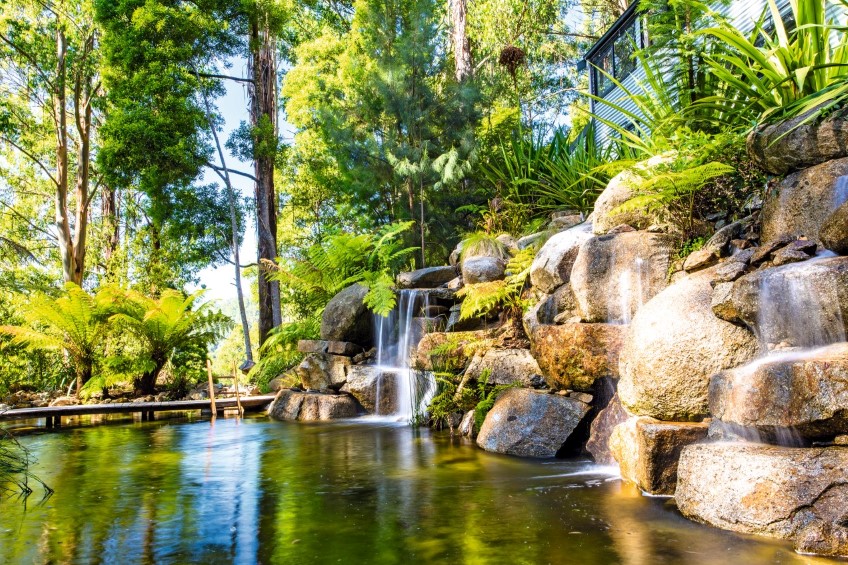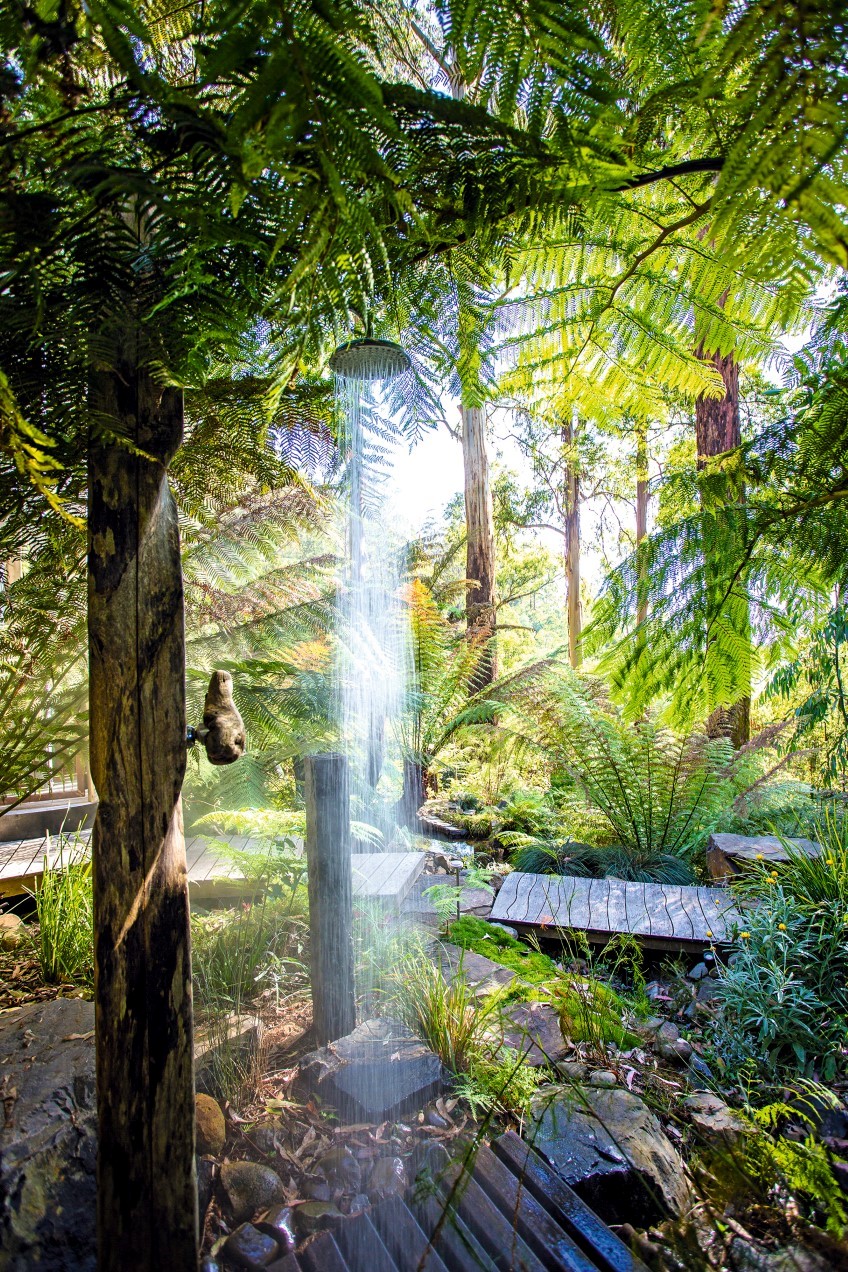
Serpentine bridge over the billabong. Photo - Claire Takacs
Landscape designer Philip Johnson’s passion is to connect people with nature and we think he does an awesome job at it.
In this extract from his new book Connected: the sustainable landscapes of Philip Johnson, he explains how that connection is deepened and refined at his home in Olinda.
Olinda, my own property in the Dandenong ranges, forty minutes from Melbourne, is set on 7 acres, with filtered views out to the Yarra Valley. We’re surrounded
by this beautiful natural amphitheatre of mountain ash (Eucalyptus regnans), which is the tallest flowering plant in the world. We have a
wonderful borrowed landscape to work with.
In my line of work everything – techniques, materials, approaches and more – is continually evolving. You get better and better as you discover new ways
of doing things. I’m lucky to be able to test out all my ideas at Olinda. I use it as a place where I can try new things and show people what’s possible.
When people see a backyard like mine they automatically perceive it as being something they can’t have. One of the most important things I try to communicate
as a designer is that we can translate and build these ecosystems in urban environments. People are yearning for this connection back to nature and
you really can build it anywhere.

A fire bowl warms mountain evenings. Photo - Claire Takacs
Water
After we won Best in Show at Chelsea in 2013, my wife wondered if we could do at Olinda what we’d done at Chelsea, so I embarked on converting our billabong
to a natural pool. As soon as I started using a billabong as a swimming pool, I had to rethink everything. I had to fence it to meet council regulations
and make sure the water was being cleaned. We’re now able to incorporate filtration systems that use microfibre technology, where good bacteria grow
and assist in cleaning and purifying the water. I installed underwater filtration zones, which consist of layers of different sizes of aggregate, in
addition to the microfibre technology. The body of water supports thousands of tadpoles and a whole range of aquatic life. By creating an ecosystem
in these billabongs, it means there’s no stagnant water – it’s not a breeding ground for mosquitoes.
We developed ease-of-access points and shelves; for example, 50 centimetres below water level there are multiple stone slabs that make it easier to get
in and out, and where you can sit. My eldest son loves playing in the shallow beachy area, and you can jump from a 2.5 m ledge into the pool. What
I really love is swimming up to the base of the waterfalls and letting the water cascade over my body. It’s one of the most cleansing and energising
experiences.

The movement of water over rock. Photo - Claire Takacs
Stone
Every single piece of stone at Olinda has been craned strategically into location. I’m really particular about stone placement. Each individual rock has
been hand-selected and I’ve made sure it’s the right piece of rock to use in the right location to create the right effect, whether that’s for a waterfall,
stepping stones, stones for sitting, keystones, diving boards or retaining rocks. I also wanted to showcase a range of different rocks and to utilise
local rock. It might sound strange, but when you work so much with rock you read the rock, you can feel the rock, you develop an understanding with
the rock. I really feel that the rock will tell you how it wants to be placed, how it wants to be connected with the earth. I would even say that it
will place itself.

Every stone has been individually placed in this artfully natural garden. Photo - Claire Takacs
Fire
When you live in an extremely fire-prone area such as the Dandenong Ranges, you cannot ever be blasé. It’s not a matter of if one will come, it’s when.
We have fire sprinklers all over the roof of the house, which in the event of a fire will create a curtain of water. I have to stress this has not
been tested in a firestorm yet. The sprinklers wet an inner ring and an outer ring, not just the house, creating a damp circle around the property.
And the great thing is the water drains back into our billabongs, which will assist in prolonging our available water supply.

An outdoor shower is screened by tree fern fronds. Amazing pathways. Photo - Claire Takacs
What really motivated me to build this garden was wanting to create a beautiful environment in which to bring up a family. I was brought up to love being
in the garden. Now, watching my sons, William and Angus, they’re learning the same thing. I can see how much they love it, and that’s what creating
these landscapes is all about.
Connected: the sustainable landscapes of Philip Johnson is published by Murdoch Books, rrp $60.

Words: Philip Johnson